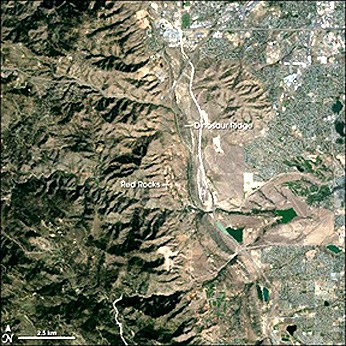Contributed by Jim Burchfield, Interim Dean, College of Forestry and Conservation, University of Montana
Beyond rulemaking, environmental analyses, and the myriad of necessary procedural steps, land management planning on National Forests will be well-served to adhere to fundamental principles. Planning strives to meet two interlocking objectives: (1) To create a more desirable future; and (2) To link knowledge to action. Both of these objectives require ongoing effort, such that planning does not become a once-per-decade tedium of covering all contingencies via numbing documentation, but a continuing learning experiment. Especially in an environment as complicated and dynamic as any given National Forest, the creation and re-creation of a coherent, “actionable” vision for a desirable future implies repeated political exercises of clarifying and allocating human values. Unfortunately, the Forest Service is not quite ready for an immersion into these messy, real-world negotiations because, ironically, it’s afraid to make mistakes. I say, bring on the arguments and dissatisfaction. Confrontation breeds learning. Plans will not be perfect. Good. If we learn from our mistakes we make the next iteration better. We make progress. What is necessary is comfort in imperfection.
The creation of learning-oriented planning argues for two unnerving transformations in the current planning process. First, the roles of agency experts must change, and second, investments in analysis must be reversed from the front to the back end of the planning processes. A more meaningful role for the mangers and scientists who guide the planning process is to promote landscape-level trials of different management possibilities – some “let burn” here, some intensive logging there – not much concerned with a particular site’s “suitability” but more focused on the responses of these lands to experimental actions (some obvious, already established criteria for suitability allocations, such as unstable soils, already exist and may continue). Concurrently, these agency sponsors engage in new, interactive, political forums with the gamut of interested parties to negotiate where and at what intensity these experiments take place. Design will be important and prior assessments of resource conditions relevant, but they will not overwhelm the overarching demands to act and learn. The proposals emerging from deliberative arguments among multiple interests will commonly generate creative ideas for action, and importantly, a set of normative indicators of benefit that can be subsequently measured. Each action is a risk, but a worthy one. The good news, of course, is that nature is highly resilient, recovering from all types of human shenanigans. We simply negotiate a new set of outcomes, and try our best.
Simultaneously, the attention of planning must be turned on its head from the tiresome tradition of pre-planning “assessment” to the dynamic practice of post-treatment evaluation. The biggest change to realize this reversal is the funding of a systematized process to measure consequences, that is, a serious commitment to monitoring and evaluation (two distinct and often wrongly conflated processes). The absence of evaluation is the commonly recognized Achilles heel of planning success, which is why adaptive management has been so rightly criticized. Behaviors can’t be adjusted or “adapted” when there’s been no confident measurement of change. The roles of different actors in planning become further clarified, as the science capacity of the agency comes into play far more significantly in the aftermath of planning (while it is now misplaced in the early phases), and the normative interests of the public ascend in importance in planning’s developmental stages. Scientists will be crucial in clarifying robust measures of change and completing analyses of consequences, even though it will be the participants of planning exercises, including non-professionals, who help conduct these measurements, learning as they go whether the results of actions indeed create the conditions expected.
What bothers many professionals is that this form of planning – deliberative, action-oriented, and uncertain – means things go wrong. But utopia remains an illusion as the land and its inhabitants change too fast for idealized models to keep up. The measurements made in monitoring could show something entirely different than the anticipated results. Fine. After all, management actions aren’t the only forces at play, especially with latent, large-scale perturbations (think climate change or big wildfires) overwhelming modest interventions. What will have changed, however, is that whatever the outcome, we know we have only ourselves to blame, and this democratization of blame takes the sting from negative consequences that have been previously viewed as career-ending mistakes. We are not just wounded but wiser.
This commitment to knowledge from planning means that we have participants in planning who aren’t vested in being correct. We need humble, curious planners, who are capable of setting up public learning systems. That planning is so imprecise, ongoing, and political annoys scientists to no end, which is why they are such lousy planners. They are trained to be cautious and correct. It’s not that we don’t need scientists – we need them desperately. They simply need to be empowered to be evaluators instead of creators. Perhaps school teachers would be better planners. They understand conflict. They are trained to discover what their constituents want. They can encourage people to do work. They are skilled at demonstrating the tools for measurement. The next day’s class starts the process again. We might even get something done.


